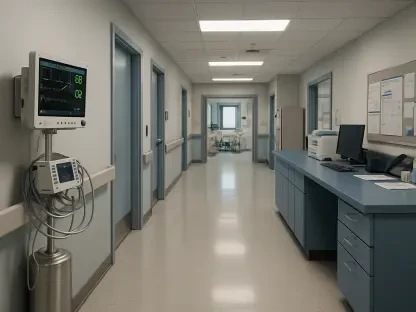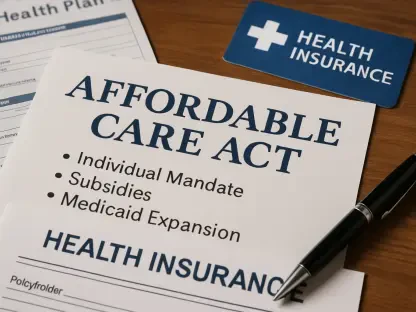Municipal budgets across various regions are experiencing unprecedented pressure due to escalating health insurance costs. This analysis dives into the current trends influencing these surges and examines the broader implications for local governments and public services. By understanding the underlying drivers and projecting future impacts, municipalities can better navigate the fiscal challenges ahead.
Context and Significance of the Analysis
As municipalities strive to maintain balanced budgets while delivering essential public services, the steep rise in health insurance premiums has emerged as a significant hurdle. Historically, manageable increases of 7% to 9% in insurance costs allowed local administrators to plan effectively. However, recent spikes ranging from 10% to 20% have thrown a wrench into these projections, prompting a recalibration of financial strategies. This analysis explores the contributing factors to these cost hikes and the potential ramifications on municipal operations.
Examination of Market Trends and Data
Historical Premium Increases and Recent Surges
Health insurance costs for municipal employees have seen gradual annual increases over the years, with recent projections predicting an alarming 10% to 20% rise by the next fiscal period. For example, in Hampshire County, Massachusetts, towns like South Hadley and Belchertown are witnessing 18% to 20% hikes in their insurance plans. Amherst and Northampton are facing substantial increases of 14.5% and 10.5%, respectively. These unexpected surges demand a thorough analysis of market behaviors contributing to the higher premiums.
Post-COVID-19 Challenges and Their Impact
The COVID-19 pandemic has significantly altered the landscape of health insurance claims, particularly elevating the demand for mental health services. Additionally, postponed elective surgeries during the pandemic have created a backlog, now resulting in increased claims. Another noteworthy factor is the surge in the use of costly weight loss medications, which had not been anticipated in earlier budget forecasts. Collectively, these elements are driving up the insurance premiums, creating economic strain on municipalities.
Shifts in Medicare and Medicaid Reimbursements
Changes in Medicare and Medicaid reimbursements are shifting more financial responsibility onto private insurance providers, including those contracted by municipalities. This shifting burden necessitates higher contributions from local governments to cover their employees’ healthcare costs. A closer look at these reimbursement trends reveals a substantial contributor to the rising insurance premiums, affecting budget allocations across municipalities.
Regional Disparities and Healthcare System Challenges
Regional variations add complexity to the issue, with different reimbursement rates and systemic health care challenges affecting local costs. Regions with higher reimbursement disparities and significant healthcare provider burnout, for instance, often face greater insurance premiums. This part of the analysis underlines the need for region-specific strategies to mitigate the unequal cost distributions.
Projections and Emerging Trends
Technological Innovations and Medical Advancements
Advancements in medical treatments and technology present both challenges and opportunities for managing health insurance costs. New treatments, although initially expensive, could lead to long-term savings by improving overall public health. Municipalities must consider these factors in their future financial planning to leverage potential cost-saving innovations.
Legislative and Regulatory Developments
Legislative efforts aimed at controlling healthcare costs are ongoing, with new regulations potentially offering long-term solutions. Understanding the landscape of these regulatory changes can help municipalities anticipate and adapt to future adjustments in health insurance costs, ensuring a more sustainable financial approach.
Strategic Insights for Mitigating Financial Pressure
Negotiating Terms and Incentivizing Alternative Plans
To manage the rising costs, municipalities could explore better negotiation tactics with insurance providers and incentivize employees to opt for alternative plans. Programs that offer monetary incentives for choosing less expensive insurance options, such as a spouse’s plan, can significantly reduce the financial burden.
Partnerships and Collective Bargaining
Municipalities can enhance their bargaining power through partnerships and collective agreements with other local governments. Pooling resources to negotiate collectively with insurance providers could yield more favorable terms, helping manage the budget strains more effectively.
Implementing Wellness Programs
Investing in wellness programs aimed at reducing overall healthcare utilization could provide long-term savings. Encouraging healthier lifestyles among municipal employees may decrease the frequency of claims, thereby mitigating the rising premiums.
Strategic Takeaways and Future Considerations
Findings indicate that unchecked rising health insurance costs will continue to strain municipal budgets, requiring sustained attention and strategic intervention. Stakeholders must advocate for systemic reforms within the healthcare industry and adopt innovative budgeting techniques to address these financial challenges effectively. By exploring negotiation strategies, wellness initiatives, and leveraging collective bargaining, municipalities can better navigate the fiscal landscape, ensuring essential services remain uninterrupted while managing their health insurance expenses prudently.









